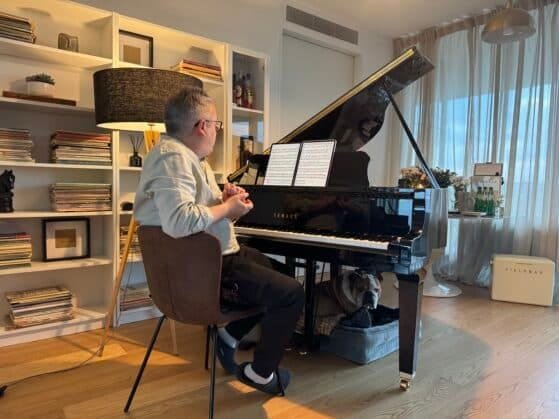
Is Classical Music Dying? No, But It’s Changing
If you’ve spent any time in classical music circles, you’ve probably heard the question: “Is classical music dying?” It’s an ongoing debate, fueled by shrinking audiences, struggling orchestras, and the overwhelming dominance of popular music in mainstream culture. But I don’t believe classical music is dying—it’s evolving.
The way we engage with classical music today looks different than it did a few decades ago. While some traditional structures may be struggling, new opportunities are emerging. And as artists, we need to embrace change rather than resist it.
Audiences Are Changing
For years, the classical music industry has been obsessed with the idea of an aging audience. We’ve all heard the statistics about the graying heads in concert halls. But the reality is that young people do love classical music—they’re just experiencing it in different ways.
Streaming platforms like Spotify, Apple Music, and YouTube have made classical music more accessible than ever. A listener might discover Beethoven’s late sonatas through a playlist, or stumble upon a Rachmaninoff concerto via an algorithm that paired it with a film soundtrack. The barrier to entry is lower than ever, and this presents a massive opportunity.
The challenge is no longer getting people to hear classical music—it’s getting them to engage with it on a deeper level.
The Role of Social Media and Digital Branding
For musicians, embracing digital platforms isn’t optional anymore. Whether it’s through Instagram, YouTube, TikTok, or even podcasts, artists are finding new ways to connect with audiences beyond the concert hall.
This shift is something I’ve been working on myself, especially with the help of Catalyst Music, who I’m currently working with for PR and marketing. Their approach recognizes that musicians today need more than just talent—they need strategy. Visibility matters. Storytelling matters. Finding ways to bridge the gap between tradition and innovation is key.
A well-crafted online presence doesn’t replace live performances, but it enhances them. It creates a community, keeps people engaged between concerts, and, ultimately, makes classical music feel more personal and alive.
Reimagining Performance Spaces
One of the most exciting developments in recent years is the way classical music is breaking out of traditional venues. While grand concert halls are still vital, we’re seeing more performances in unconventional spaces:
- Chamber concerts in art galleries and museums
- Intimate house concerts streamed live
- Open-air performances in public spaces
- Classical music collaborations with non-classical artists
These settings often attract audiences who wouldn’t normally step into a concert hall. They offer a more relaxed, immersive experience that feels accessible without compromising artistic integrity.
Classical Music as a Living Art Form
For classical music to thrive, we have to remember that it is not just a museum piece. Every composer we revere today—from Bach to Beethoven to Brahms—was, in their time, a contemporary artist pushing boundaries. We need to foster that same spirit today, encouraging new compositions, fresh interpretations, and bold programming that speaks to modern audiences.
It’s also worth noting that classical music has always gone through periods of reinvention. There were times when Baroque music fell out of favor, only to be revived centuries later. Romanticism gave way to modernism, which in turn evolved into new experimental forms. Change is not the enemy—it’s the reason classical music has survived for so long.
Final Thoughts
Classical music is not dying. It’s shifting, adapting, and finding new ways to remain relevant. The real challenge isn’t the lack of interest—it’s whether we, as musicians, are willing to meet audiences where they are.
With the right approach—one that blends tradition with innovation, artistry with strategy—we can ensure that classical music not only survives but thrives.
If you’re an artist looking to navigate this new landscape, I highly recommend checking out Catalyst Music. Their expertise in PR and marketing is helping musicians like me bridge the gap between the classical world and today’s digital-first audience.
Let’s keep the music alive